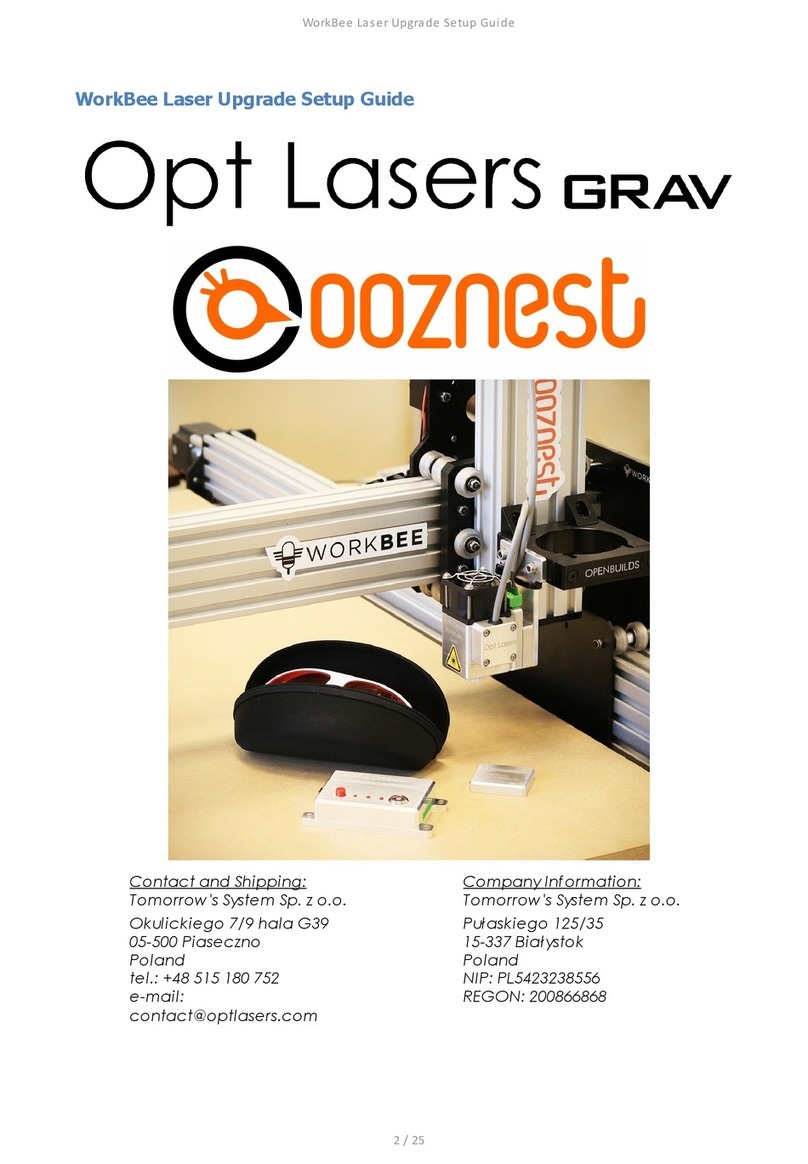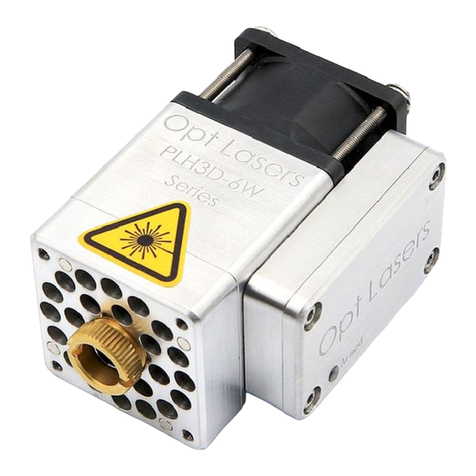
Support and Manua ls
4 / 6
Electrical Information
Important: PLH3D-15W-Series engraving laser head should be powered with a high-quality power supply without
anything else connected. Please note: connecting the laser head to the same power supply unit as a stepper motor
or any other high-impedance equipment is not recommended. Doing so may cause irreversible damage to laser
diodes.
Important: Do not connect both Modulation Input #1 and Modulation Input #2 at the same time. Doing so may
result in the malfunction of the laser head.
Modulation Functionality
Engraving Laser Head Modulation Input 1 Modulation Input 2
PLH3D-15W Series 0 – 5 V Analog Signal
0 – 5 V TTL/PWM Signal
0 – 5 V TTL/PWM Signal
0 – 10 V TTL/PWM Signal
0 – 24 V TTL/PWM Signal
Modulation Input #1:
Modulation Input #1 accepts Analog, Pulse-Width Modulation (PWM) and Transistor-Transistor Logic (TTL)
signals. The operating range of Modulation Input 1 is 0 – 5 V. If it is connected to a signal with a slightly higher
voltage, e.g., 0 – 10 V, only the 0 – 5 V portion of the signal will affect the laser output power. The voltage
connected to this input should never exceed 10 V.
Modulation Input #2:
Modulation Input #2 accepts PWM or TTL signals. Examples of compatible control signal ranges are: 0 – 5 V, 0 –
10 V and 0 – 24 V. For control via PWM, we recommend using a base frequency of 5,000 – 10,000 Hz. While
frequencies such as 1,000 Hz can also work, higher frequencies typically produce better grayscale images. Duty
cycle % will correspond to the optical output power %.
Specification of Modulation Input #2 are following:
Parameter Test condition
@ Ta = 25°C
Min.
Voltage
Typ.
Voltage
Max.
Voltage
Units
High level input
voltage
Vcc = 12 V
Vcc = 24 V
2.5 - - V
Low level input
voltage
Vcc = 12 V
Vcc = 24 v
- - 1.0 V


























